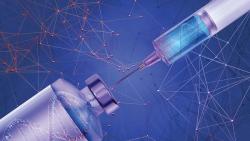
OR WAIT null SECS
- About Us
- Advertise
- Contact Us
- Editorial Info
- Editorial Contacts
- Editorial Advisory Board
- Do Not Sell My Personal Information
- Privacy Policy
- Terms and Conditions
© 2024 MJH Life Sciences™ and Pharmaceutical Technology. All rights reserved.
Emerging Sterilization and Disinfection Technologies Offer Alternative Solutions
Equipment and Processing Report
Vaporous hydrogen peroxide, nitrogen dioxide, chlorine dioxide, and carbon dioxide technologies can be used in pharmaceutical manufacturing to sterilize or disinfect.
Sterilization and disinfection are crucial processes for pharmaceutical manufacturing and are used in multiple aspects, such as materials, packaging, process equipment, isolators, medical devices, and cleanrooms. Steam and dry-heat sterilization are widely used for process equipment and for sterile drug products, but these processes can potentially degrade heat or moisture-sensitive materials. Radiation sterilization, such as gamma radiation, avoids heat and moisture but can also potentially degrade materials. Ethylene oxide (EO) is an accepted and established chemical sterilization technology, but EO has safety hazards and potentially longer sterilization cycle times. Other technologies with advantages for certain applications are emerging.
Vapor-phase hydrogen peroxide
Vapor-phase hydrogen peroxide (VPHP) has been available for more than 20 years in the pharmaceutical industry and has been growing in use for various applications (e.g., decontaminating isolators, environments, process equipment, and material pass-throughs). Some problems experienced with implementing and qualifying VPHP can be addressed through a better understanding of the fundamental physiochemical characteristics of this sterilization method, such as its dual-phase (i.e., liquid and vapor) nature, according to a recent peer-reviewed article in Pharmaceutical Technology's September issue by James Agalloco and James Akers (1). For example, VPHP may seem to have variability in lethality, but this result is largely due to adapting process models and approaches from a single-phase gas process (e.g., EO) without considering the two-phase nature of VPHP, said Agalloco and Akers. Advantages of VPHP are that it can be used with heat-sensitive materials and is compatible with most metals and plastics, it does not leave a long-lived residue, and it can have shorter cycle times in some cases.
Nitrogen dioxide gas
Nitrogen dioxide (NO2) gas generators are currently under development for isolator decontamination and cleanroom applications. The low boiling point of NO2 (21°C) reduces the amount of sterilant condensation that occurs on surfaces, which has been observed with some H2O2 processes, says Jim Rickloff of the Sterilization Technology Group. For rapid aeration at the completion of an exposure cycle, minimal condensation is an advantage. In the event that NO2 condenses or is adsorbed on a surface, it will evaporate much more quickly than will H2O2, explains Rickloff. Commercial sterilizers are currently available from Noxilizer for the terminal sterilization of medical devices and combination device-drug products and for the external surface sterilization of single-dose drug containers. An advantage of NO2 for sterilizing pressure or temperature-sensitive drug products is that, unlike EO and VPHP, the NO2 process operates at room temperature (2).
Chlorine dioxide gas
Chlorine dioxide (ClO2) gas can be used for decontamination in a wide range of pharmaceutical manufacturing situations, from isolators or process equipment to cleanrooms and entire facilities. ClO2 gas is less corrosive than VPHP or liquid ClO2. Pure ClO2 gas, such as that used by ClorDiSys, does not contain impurities that can react to form corrosive byproducts, says Mark Czarneski, director of technology at ClorDiSys. ClO2 gas operates only in the gas phase and avoids some of the problems found with VPHP’s dual-phase operation; a ClO2 gas process has good repeatability and simple validation due to its real-time feedback and control capability. In addition, pure ClO2 does not leave any residues.
Carbon dioxide
Carbon dioxide (CO2) is used in a precision cleaning and disinfecting process for medical instruments and devices, as well as in applications outside of life sciences. It can be used, for example, to clean the surfaces of silicone rubbers and polymers prior to bonding, coating, or assembly for use in stringent environments, such as cleanrooms, biomedical devices, or aerospace (3). The technology is currently being validated by the US NASA Jet Propulsion Laboratory for sterilization of equipment destined for Mars exploration, says David Jackson, president and CEO of CleanLogix. Although it is not currently used commercially in pharmaceutical manufacturing, the technology is capable of sterilizing pharmaceutical equipment or packaging components, says Jackson. The CleanLogix CO2 process can operate either as a liquid or supercritical fluid in a pressurized vessel or, in an ambient pressure environment, as a composite spray of solid CO2 crystals in an air stream. In liquid form, CO2 acts as a solvent to chemically remove particles, ionic contamination, and organic residues. As a spray, it physically scours the surface and also acts as a solvent to remove these materials. The composite spray can also be combined with an atmospheric plasma CO2 technique that further cleans the surface. In any of these techniques, trace amounts of ozone or peroxide can be added to the CO2 to kill microbes and denature spores. "A significant benefit of CO2 as a sterilization technique is that it can both clean and disinfect a surface," says Jackson. "Other processes leave behind debris, which can include biological endotoxins, but CO2 offers the capability to remove biological endotoxins."
References
- J. Agalloco and J. Akers, Pharm.Tech. 37 (9) 46-56 (2013).
- E. Goulet, Pharm.Tech. 37 (3) 54 (2013).
- D. Jackson, Rubber World 248 (2) 30-33 (2013).
For further reading:
Industry experts James Agalloco and James Akers discuss vaporous hydrogen peroxide sterilization in the September 2013 issue of Pharmaceutical Technology.
Evan Goulet, technical applications manager at Noxilizer, discusses nitrogen dioxide sterilization for packaged parenteral drug products in the March 2013 issue of Pharmaceutical Technology.
Industry expert John Anderson discusses
autoclave validation
in an article in this October issue of the
Equipment & Processing Report
.



